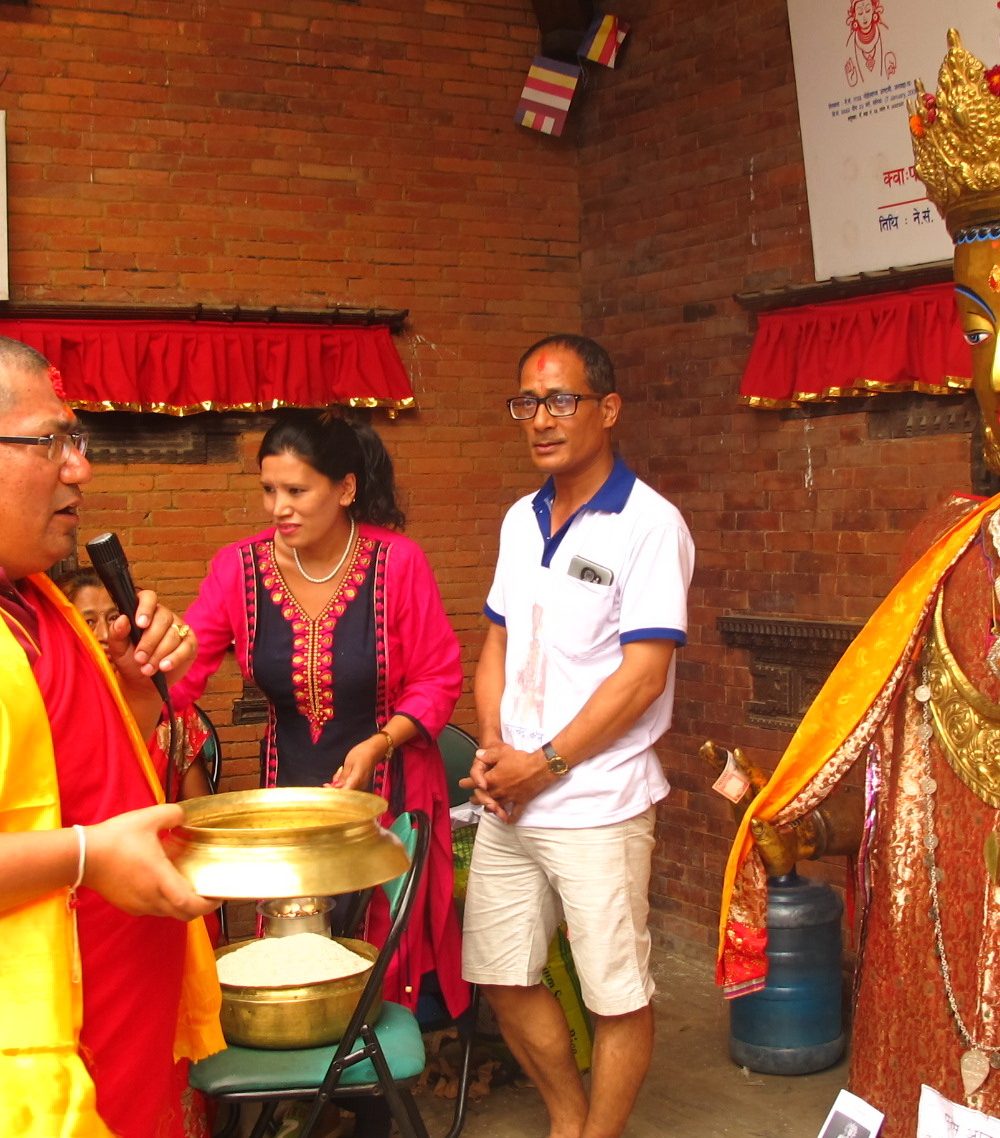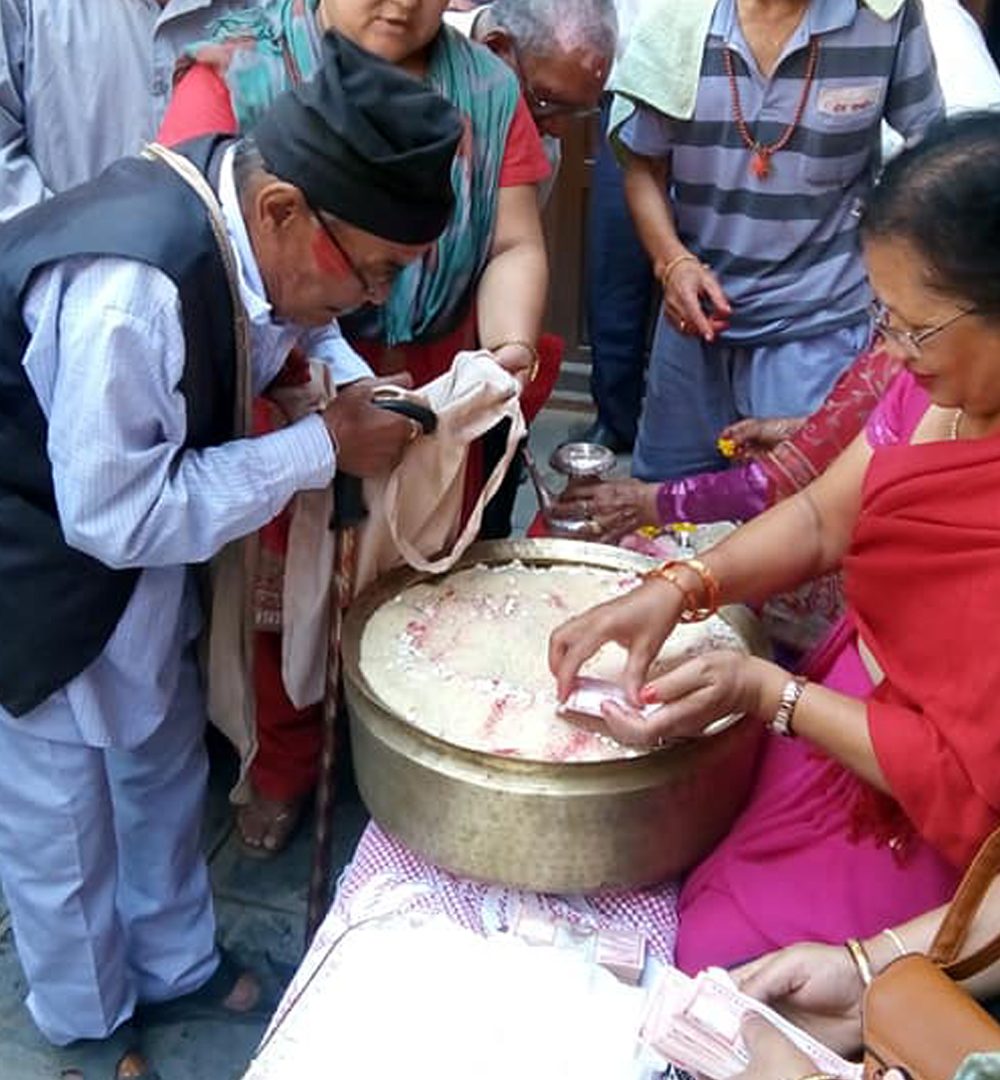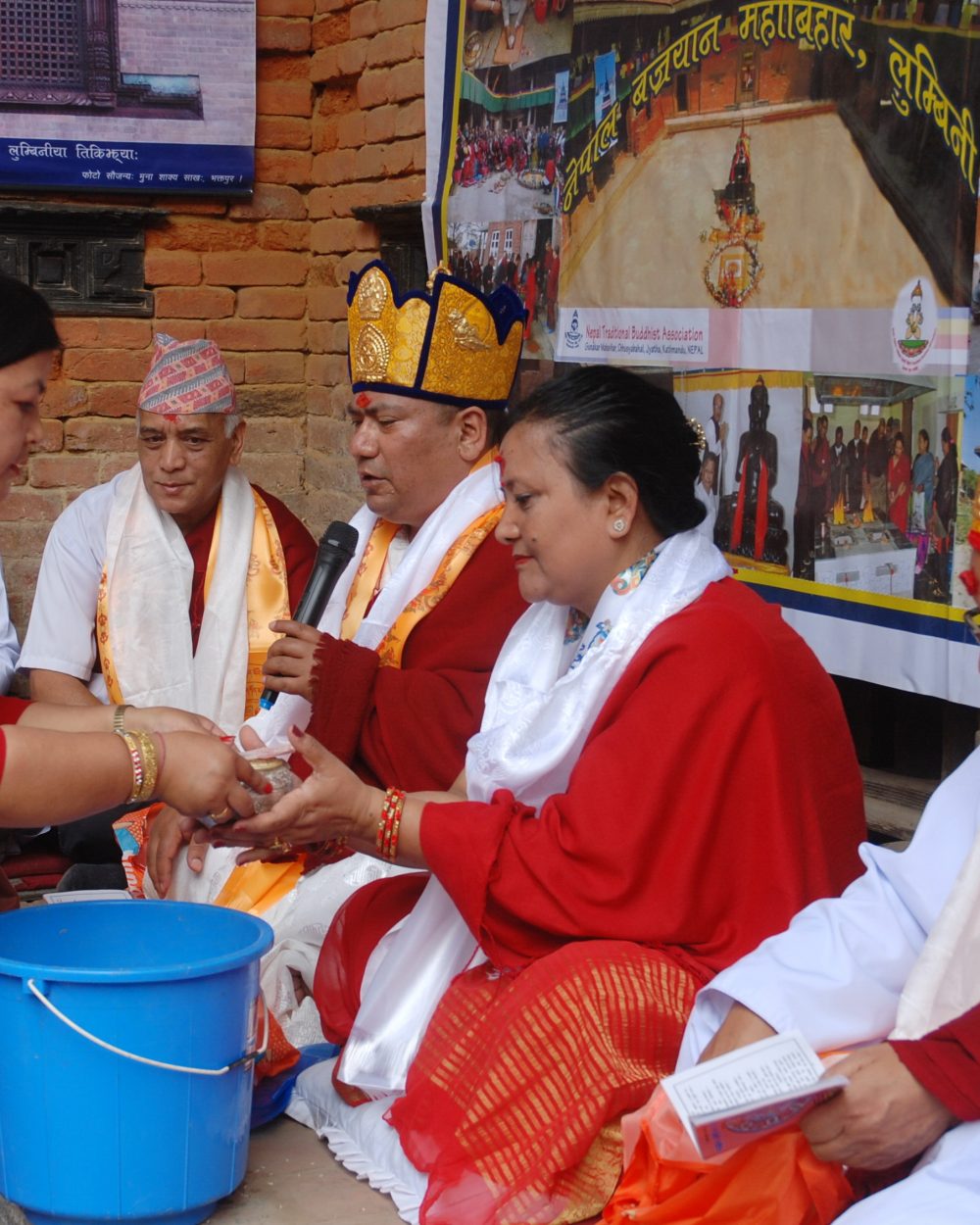Making Dāna Offerings
The earliest texts have numerous sermons by the Buddha urging householders to offer donations of food, clothing, and shelter to the sangha, earning merit in return. Donations are recurringly likened to planting seeds in a field, an investment that yields great results, similar to stalks heavy with grain resulting from a single seed.
In the Bodhicaryāvatāra, one of the most copied and sourced texts of Mahāyāna Buddhism, author Śāntideva lauds myriad devotional activities, as some devotees are urged to offer foods “soft and hard,” jeweled lamps “arrayed in rows on golden lotuses” before “images set up on golden stands. In Chapter XVII of his encyclopedic Śikṣāsamuccaya, he elaborates on the vast quantity of puṇya earned and the exalted rebirth destinies resulting from each act of donation. The focus is on shrines with a Buddha image and with stūpas. His text specifically mentions circumambulating, and the rewards for offering garlands, perfumes, robes; and decorating shrines with flags, parasols, and lit oil lamps. As in many other areas of ancient Indic Buddhist culture, Newar Buddhists follow these teachings until the present day.
WATCH THE VIDEO








